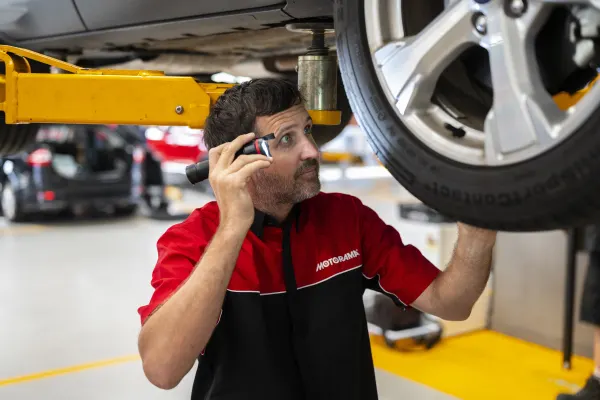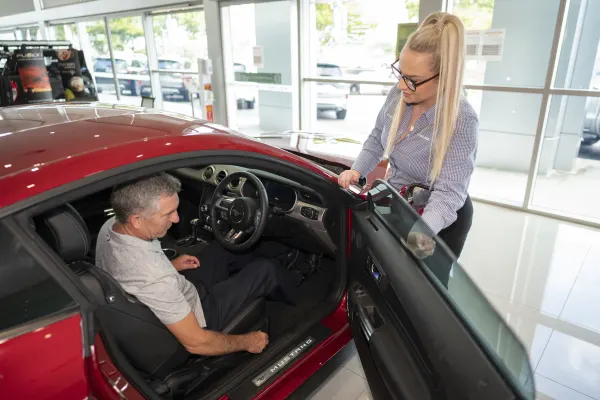
Review: 216 Holden Captiva LTZ
Posted in Vehicle Reviews
Review: 216 Holden Captiva LTZ
Buyers looking at the Captiva were previously given the choice of the Captiva 5 or Captiva 7, with three grades among the two. Now though, the separation has been ended – the two models reunited as the Captiva.
But is it enough to refresh the Captiva with fewer seats on entry models?
Introduced in 2006, the Captiva caught on with buyers wanting a family sized SUV, but didn’t know how big their family was going to be. Unfortunately for the Captiva 5, most people wanted the security of those two extra seats – and while the Captiva 7 sold well, its smaller stablemate struggled.
All that is over now, with the Captiva uniting the two – with five seats in entry LS models, while upgrading through the trim levels earns you the two extra seats in the back.
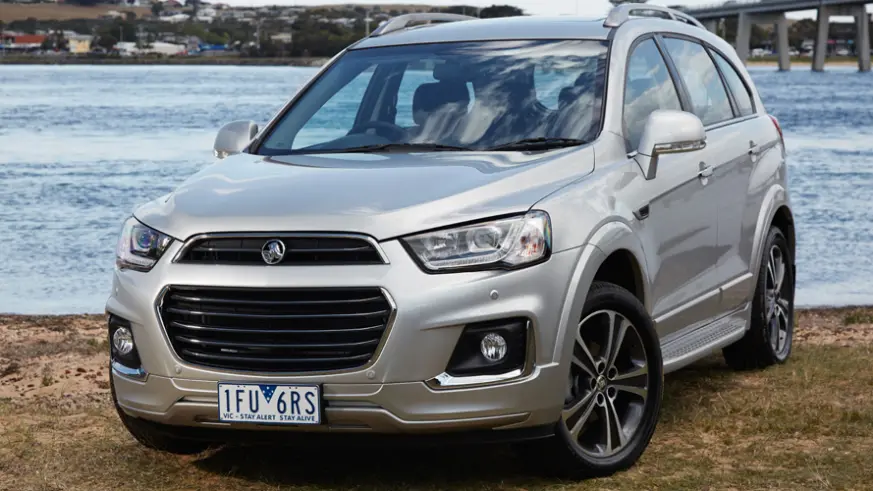
INITIAL IMPRESSION
The flagship Captiva LTZ Diesel in Carbon Flash black is premium quality, with everything you would expect from a vehicle nudging past $40,000. Motorama Holden’s Captiva was fitted with custom 22” alloy wheels, although 19” wheels are standard on the LTZ.
The redesigned body on the Captiva is largely a success, with a more upmarket nose, while the LTZ’s body-coloured mouldings look much more premium than the black plastic cladding the entry-level models get.
The big new change on the inside is the addition of Apple CarPlay/Android Auto to the new multimedia system. The new software lets you, for all intents and purposes; mirror your phone’s screen with a clearer interface – without having to learn a new system if you switch cars.
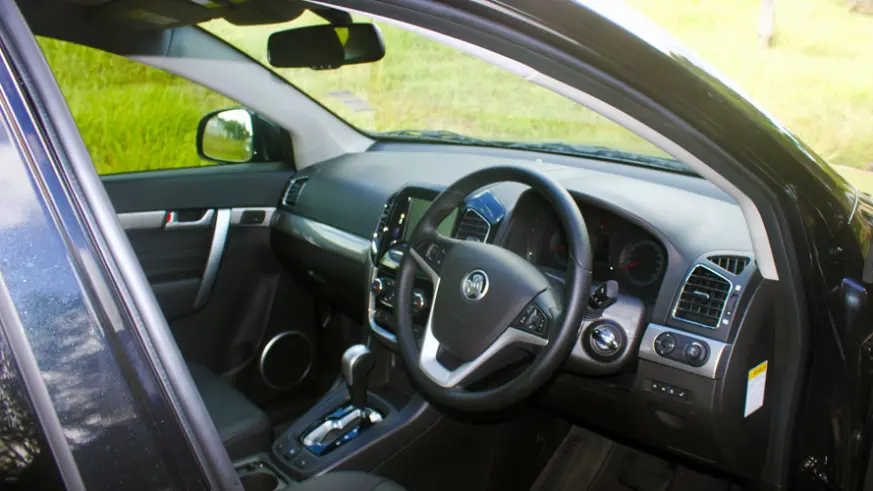
DRIVEABILITY
You can have your Captiva with a choice of three engines: a 2.4-litre petrol four-cylinder found on the entry level LS, a 3.0-litre V6 petrol standard on the LT and LTZ and the optional 2.2-litre diesel, as tested.
The diesel rides nicely, put your foot down and power will push you forward – the Captiva’s sweet spot is right in between 2,000 and 2,500 RPM. Once you’re at speed, the Captiva has it together, all you need is a quick burst to overtake on the highway is as easy as hitting the right lane with your foot gently on the accelerator.
Steering is tight; the Captiva gives sharper feedback than some large SUVs, you don’t feel like you’re going to topple over when you make a sharp turn. The ‘active torque on demand’ all-wheel drive system lends you extra support if you start to slip. You won’t notice it kick in until late in the piece, but just having it in the background is added peace of mind.
The suspension set up in the Captiva could use some adjustment settings in the cabin, particularly with our car’s custom wheels; the ride favours a firm touch. This is great for road holding, but not so amazing when you’re faced with one of the many uneven roads around Australia.
Around the easy, nicely maintained streets of the city and suburbs – the Captiva pulls around easily, especially in the diesel. At low speeds up to 60km/h, it’s smooth off the line and maintains a good pace, without noticeable turbo lag setting off from a standstill. And in the picturesque, hilly suburbs around Brisbane’s city fringe – the Captiva was right at home, holding hills easily and powering through short twists and turns.
Overall, the Captiva has refined its drivetrain significantly over the past decade – which is no more apparent than in the flagship LTZ as, even with modifications, it drives and handles with sophistication of a premium offering for a sub-$45,000 price tag.
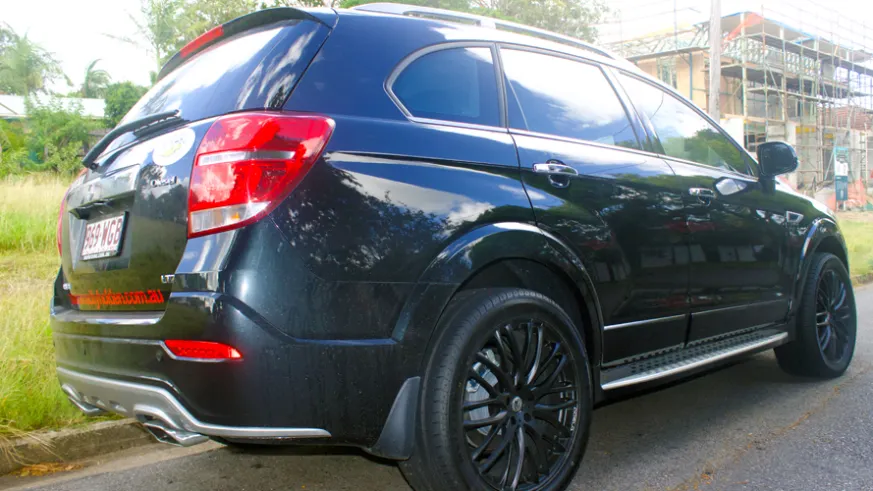
LIVEABILITY
This is where the Captiva has traditionally thrived: being able to offer value for money in a convenient, versatile package. The LTZ, in particular, is on show with premium touches without a whopping charge on the invoice.
The leather trim on the LTZ steps up the interior, and it even makes the ‘plus two’ seats in the third row feel much more substantial, rather than just an afterthought like in some other SUVs.
Similarly, the shiny new toy inside – Apple CarPlay and Android Auto – works to integrate your smartphone into the multimedia system, and is pretty much a success. We tested the Apple version, which by all accounts is the easier to pair (Android phones require a separate, free app to run.) On an iPhone 6S Plus, running the latest software, pairing to the system was painless – although you do need your genuine Apple cable, a cheapie replacement USB isn’t always compatible, which can be frustrating if you’ve got a fraying, old cable or have lost it. Another oversight of the technology, which isn’t unique to the Captiva, is that you can’t pair iPads to the system – meaning if you want a mobile workstation in your car, you’re out of luck.
Once up and running, however, the system is super simple – Apple CarPlay allows you to utilise Siri for most of your commands, meaning you don’t have to take your eyes or hands off the steering wheel to read or reply to texts that arrive while you’re driving. It has to think a little bit if you’ve got third-party apps like Spotify (it prefers you use Apple Music), but it’s fully supported and is much better integrated than most multimedia systems.
Sitting inside, interior space is good, with enough room that you’re not knocking shoulders with the passengers in the front row – and that three adults can sit along the second row. In the third row, legroom is excellent for younger kids, but big teenagers and adults should really only ride back there in a pinch.

Configuring the seats is simple with easy (and light) levers that can collapse the necessary seats to load in cargo and passengers. The third row folds completely flat into the floor, and automatically folds the headrest when folding down – a nice touch, especially if you’ve got your hands full trying to load the back of the car.
Boot space with both the sixth and seventh seats in place is fine, but if you’ve got a full car, the fortnightly big shop or a trip to the airport with everyone’s luggage is probably off the cards. In five seat configuration, the trunk can handle everyone’s gear without breaking a sweat – Holden rates it at 465 litres of storage space, which falls on the larger side when stacked up next to it’s competitors.
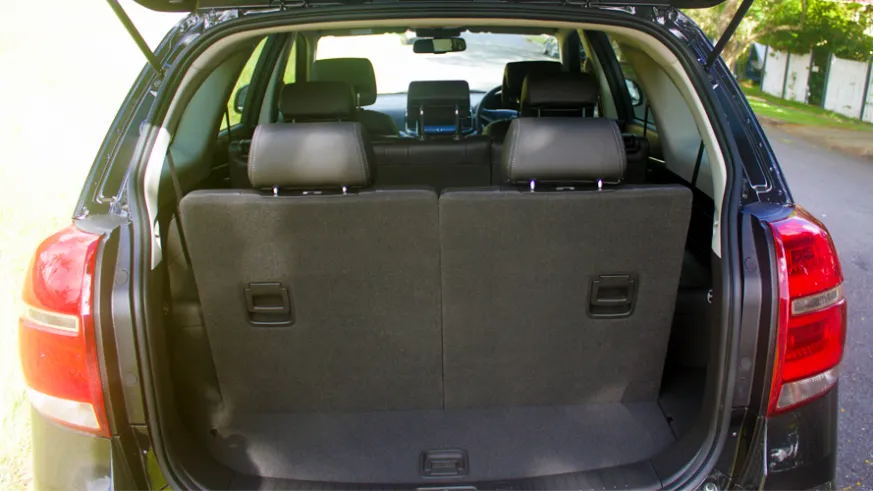
That said; there are a few ergonomic choices inside the cabin that are a bit odd.
Instead of having a key, or the keyless push-button start option, the Captiva has taken the best of both worlds on the top-spec LTZ. Basically, you get to turn the car over in the same spot as the ignition, but instead of twisting a key, it’s just a plastic switch. It seems like an unwieldy solution to a problem that didn’t exist.
To operate the wipers, you have to push the stalk up to turn them on; the opposite of what you would find in most cars these days. Other than that, the cabin is easy to operate – with lots of deep cubbies and storage spaces.
Getting out onto the road, the diesel has a throaty engine note – although the cabin is commendably insulated from road and wind noise. At highway speeds, passengers can enjoy a conversation without having to shout over a dull roar that would once plague a diesel SUV’s interior.
Holden has also done well on the safety front, adding Blind Spot Monitoring and Rear Cross Traffic Alert into the mix in the LTZ, which, although we’d love to see it standard across the range, adds to the already stellar 5-Star ANCAP safety rating achieved by the entry-level LS when it was tested. The LTZ also score Front Park Assist (in addition to the range standard Reversing Camera) to make sure that bumps and scrapes are kept to a minimum, although the sensors can sometimes be a bit too precious, which might annoy you if you’re accustomed to parking in a tight space at work or in your garage.
Braked towing capacity is rated at 1500kg for the 2.4L petrol, with 2000kg for the V6 and diesel engines, perfect for caravans and boats. Unbraked capacity is listed at 750kg across the range.
The final word on the Captiva should come down to what you need your car to do. If you need a vehicle as a full-time family hauler plus a tow vehicle as well as an SUV loaded with tech – there aren’t many competitors that combine everything into one neat package like the Captiva.
COST
Now that Holden have ditched the 5 and 7 suffixes – now starts at $26,490 for the only 5-seat and manual in the range, adding $4,000 for the 7-seat, auto option in the entry model LS. For that kind of coin, you can have the 2.4L 4-cylinder petrol, with 2WD drivetrain.
The mid-range LT and top-spec LTZ are seven-seat only propositions, with a bigger V6 petrol standard under the hood and an all-wheel drive system. The flagship LTZ with optional diesel comes in at $41,490, while premium paint is a $550 option across the range (Summit White and Velvet Red are no-cost choices.)
The new Captiva is covered by Holden’s Lifetime Capped Price Service Guarantee, as well as a 3-year, 100,000km warranty with Holden Roadside Assistance included. Scheduled services are due every twelve months or 15,000km whichever comes first. Major services on the previous Captiva diesel were due at 120,000km, which used the same 2.2L engine of this model. Service prices are not confirmed, but you can check before you decide on the Holden website.
CONCLUSION
The original Captiva won it’s fair share of fans for its ability to offer a top of the range diesel, seven-seat SUV well under the $50,000 mark that is a sweet spot for many families budgets. That continues with the new models, sharpening the pricing, just like the looks.
To take the all-new Captiva on the road, speak to the friendly team at Motorama Holden to put it through your own test.
SEE ALSO…
Kia Sorento [Si models]
Mitsubishi Outlander [XLS models]
Ford Kuga [Trend models](No 7-seat option)
Nissan X-Trail [ST-L 7 Seat models](No AWD or Diesel option for 7-seat models)
Toyota Kluger [GX models]
(No Diesel Option)

